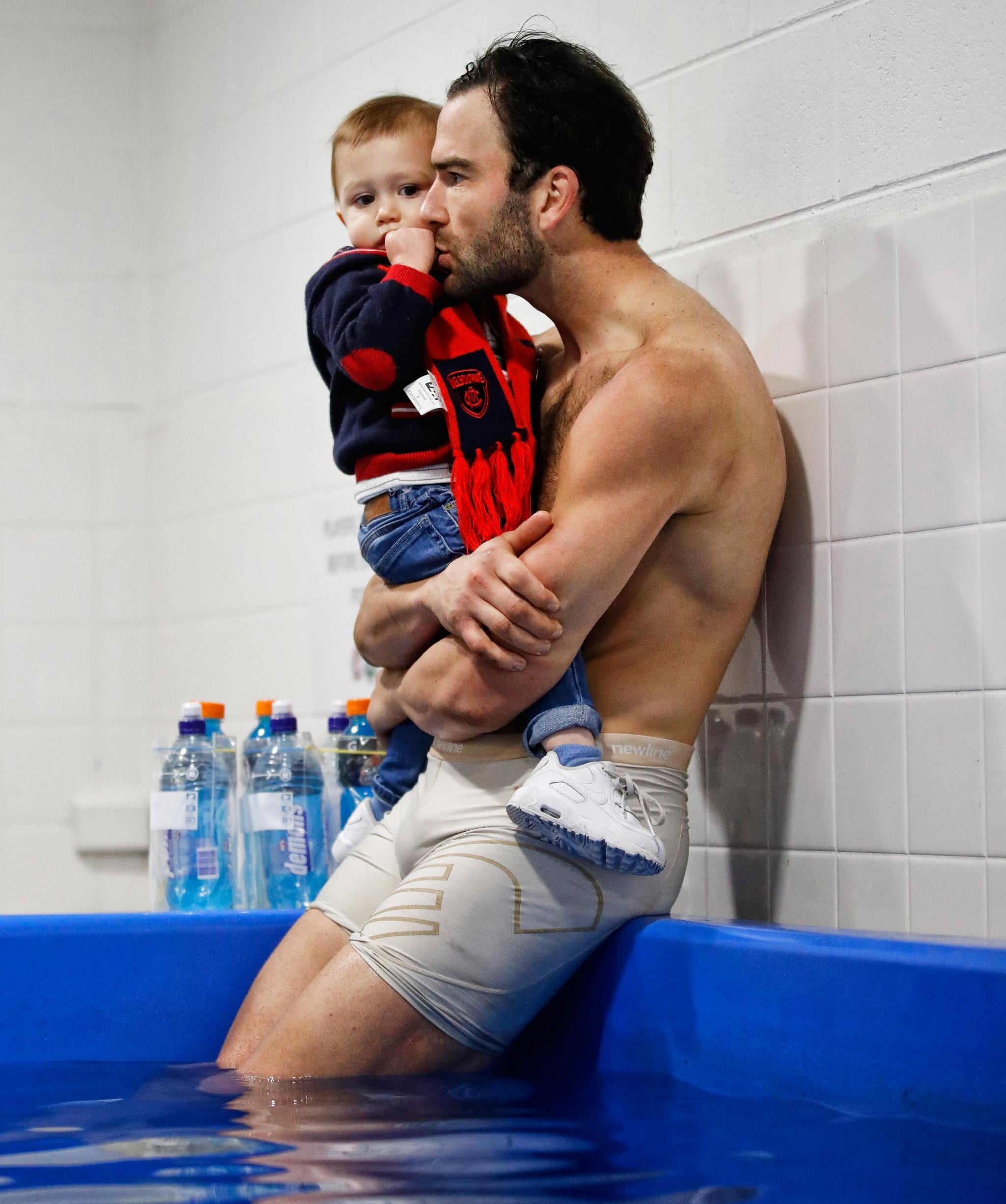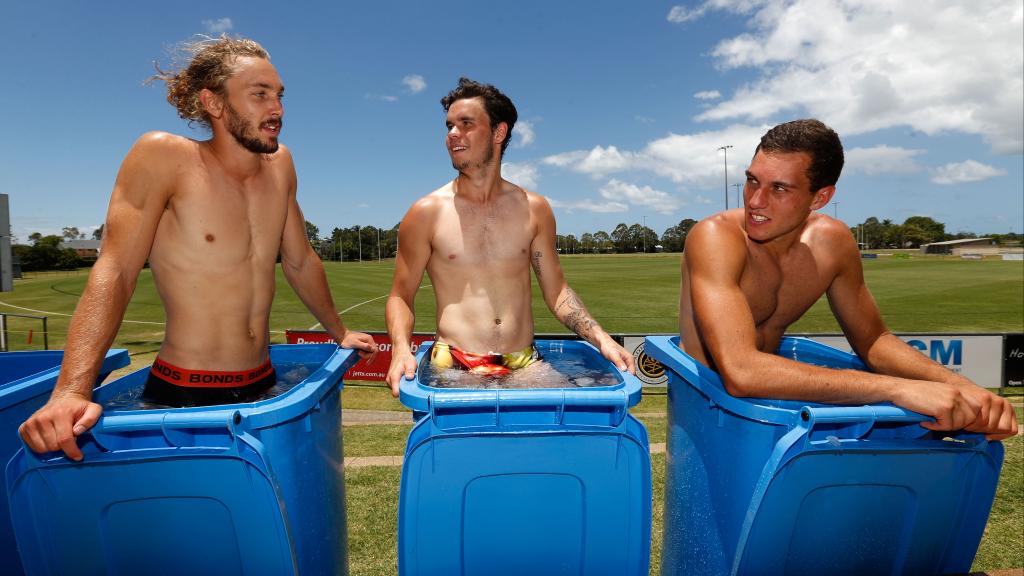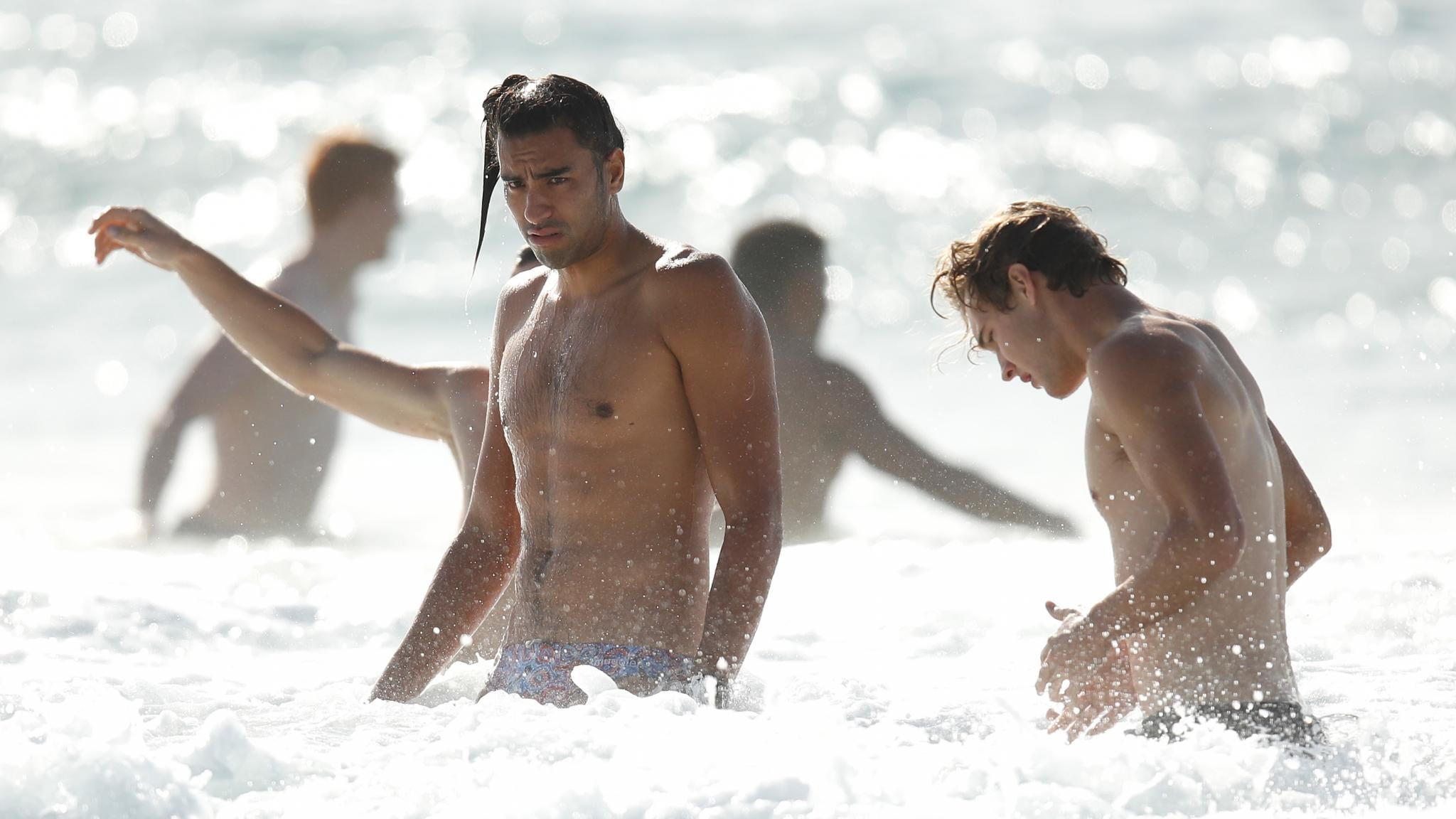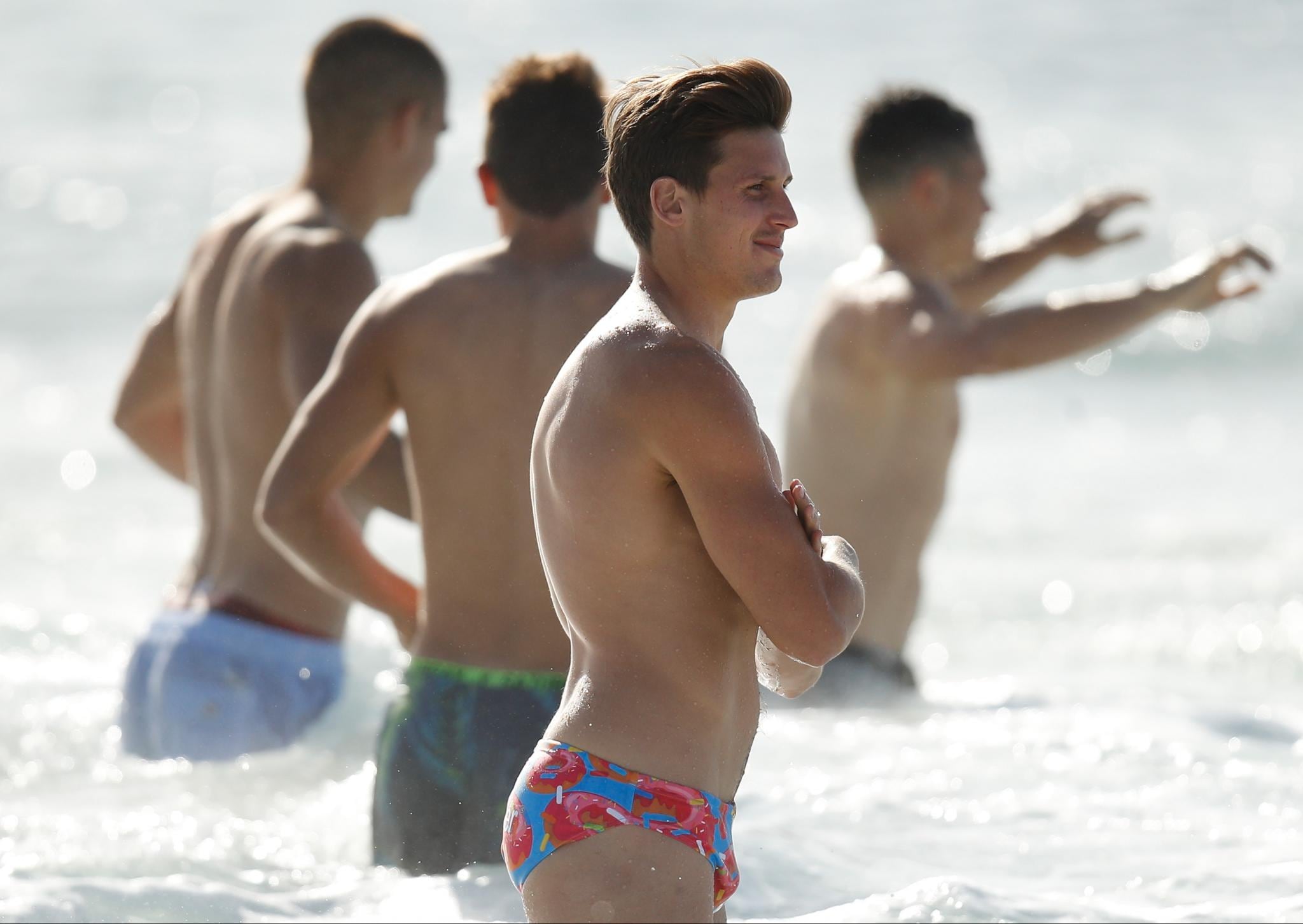WHETHER it's AFL, cricket, rugby league or many other team sports, you'll see them after most matches.
You'll also see elite – even semi-elite – runners, cyclists and rowers use them too.
Ice baths. Dreaded by some and lauded by others as a way to recover quicker and more efficiently from a hard training session or game.
But are they really essential to help players get the best out of themselves?
Demon Jordan Lewis feels the post-match chill. All pictures: AFL Photos
Since the late 1970s, conventional wisdom has dictated athletes cover the muscles they've just used in ice.
By slowing blood flow, the theory goes, ice reduces inflammation and pain, promoting recovery.
The most extreme version of this is the ice bath, where you jump into waist-deep water at a frigid 10-15 degrees Celsius.
After a 40-year reign, enthusiasm is cooling for the ice bath
A growing body of scientific evidence is raising questions over whether icing is actually an effective method for recovery after exercise.
In science journalist Christie Aschwanden's new book 'Good to Go: What the Athlete in All of Us Can Learn from the Strange Science of Recovery', she investigates a huge range of recovery methods.
Instead of promoting healing and recovery, icing might actually impair it."
When it comes to ice, Aschwanden is about as glowing as she is with more 'fringe' recovery methods like floating chambers, NormaTec boots and cryotherapy. Which is to say, not very.
Have ice baths, will travel: Giants Matt Buntine, Zac Williams and Tom Downie take the DIY approach in this 2015 session.
"Instead of promoting healing and recovery, icing might actually impair it," Aschwanden writes.
The evidence, she says, is stacking up against the popular use for the past four decades, and suggests the body is better left to repair itself over time.
Is icing muscles doing more harm than good?
A prominent physician lending weight to the argument against ice is Gabe Mirkin.
It was Mirkin who in 1978 coined the acronym RICE (rest, ice, compression, elevation), a rubric for rehab that will be instantly familiar to athletes of all levels, and has also been adopted for post-workout recovery.
Now, Mirkin has joined the chorus of scientists believing icing can be counterproductive for recovery after exercise.
A wheelie bin also gets the job done for former Kangaroos Drew Petrie and Ben Jacobs back in 2013.
Sydney superstar Lance 'Buddy' Franklin cools off.
And here's the significant point - inflammation is part of the healing process.
So how useful are those next-day ice baths or walks into the surf?
Again, he found icing suppressed the cell-signaling that regulated muscle growth.
Hobart's waters bring added bite for the Lions in January this year.
"It shouldn't be used after every training session," Peake says.
"If you're trying to get maximum adaption, cold water immersion is not going to be beneficial."
If it feels good ... the Suns are regulars in the much warmer Queensland surf
And that's the aspect that makes this topic so complicated.
Carlton's Charlie Curnow emerges from the breakers during a club trip to Mooloolaba.




